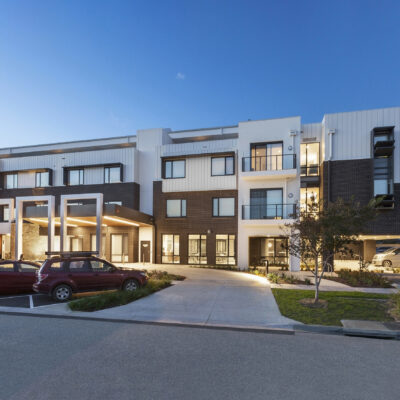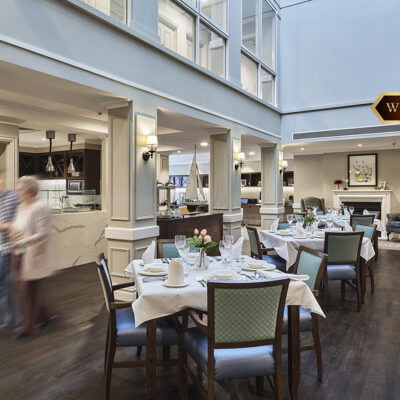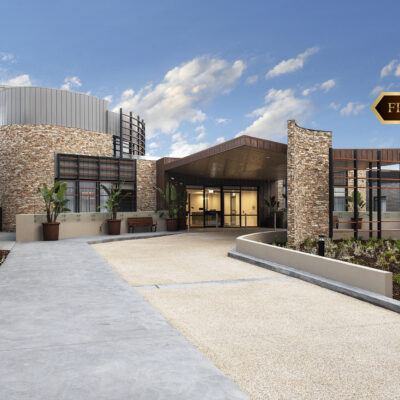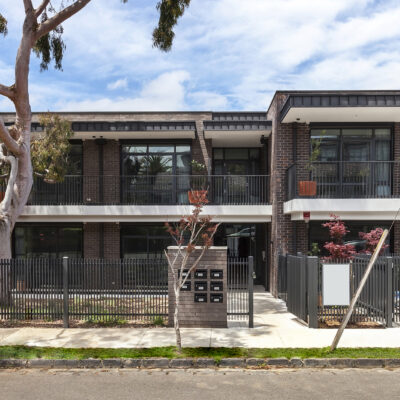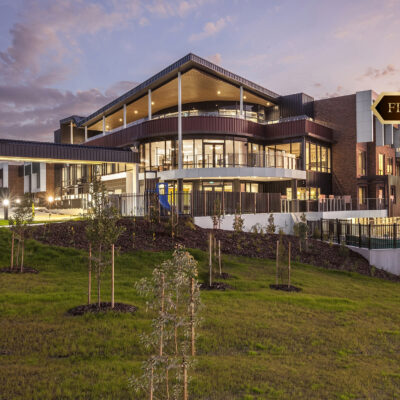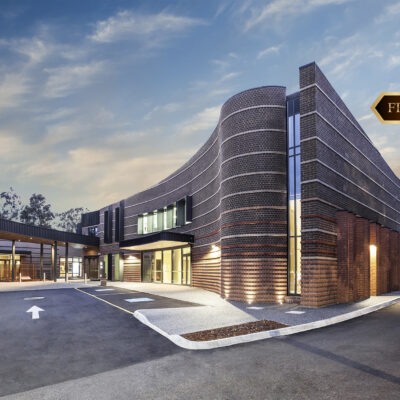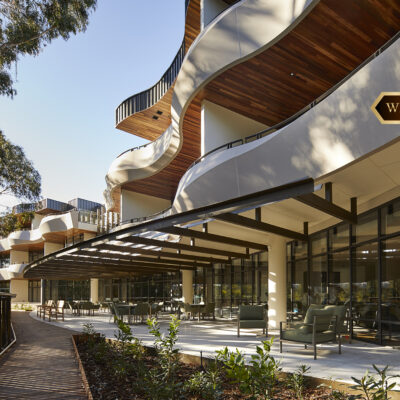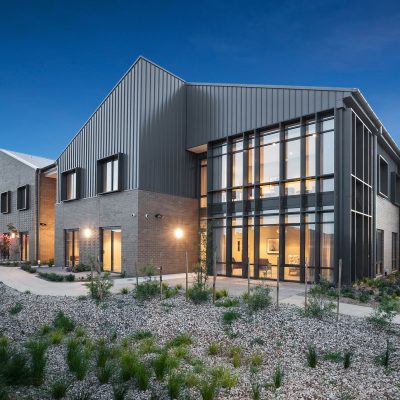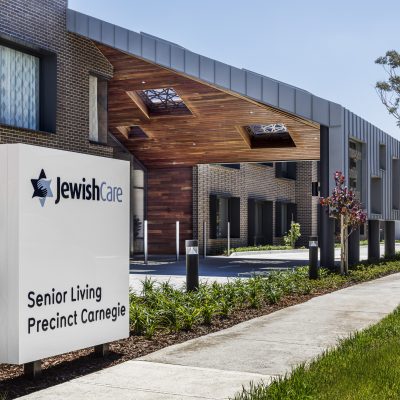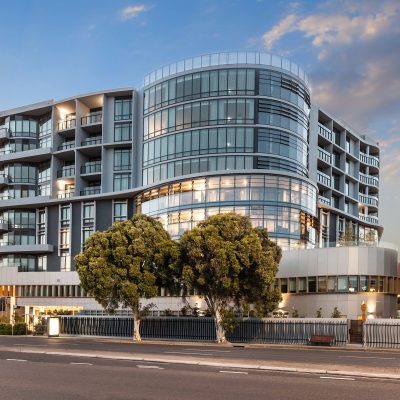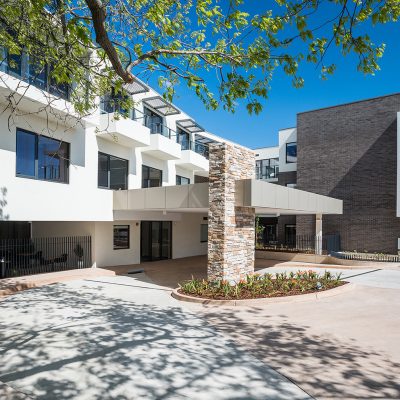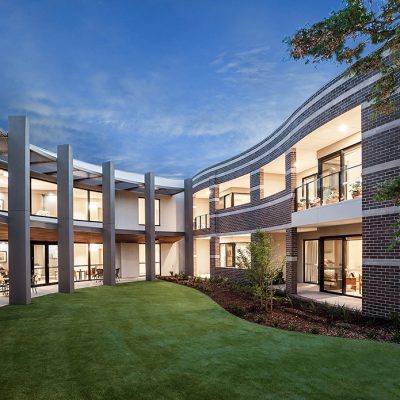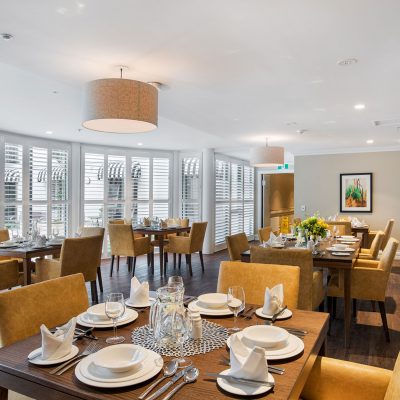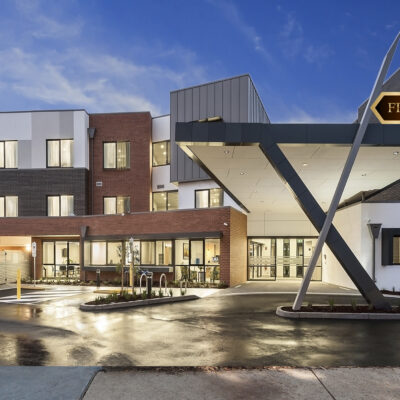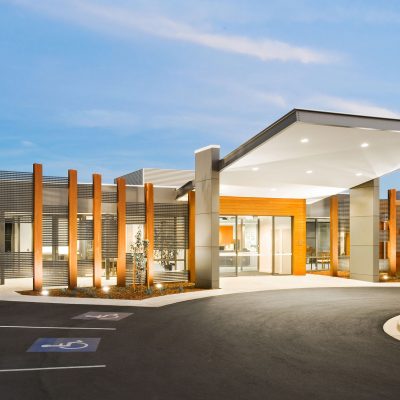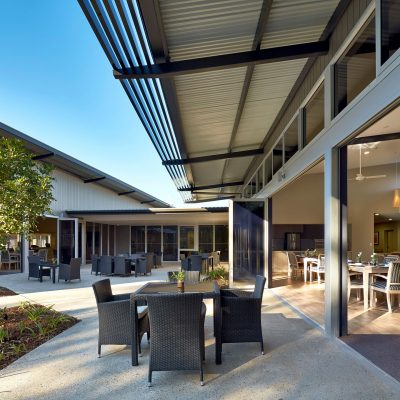CaSPA Care was established following the amalgamation of two local not-for-profit aged care facilities, Claremont Home (1956) and Southport Community Nursing Home (1981). Both residences have been part of the fabric of the City of Port Phillip for decades and were established to ensure members of the local community could spend their later years in familiar surroundings.
After agreeing to a merger and having successfully applied for a Land Bank site in South Melbourne, CaSPA Care signed a lease over the land with the Victorian Department of Health, thereby ensuring CaSPA would continue to meet the needs of the local community.
Smith + Tracey was then commissioned to develop the design for a new high quality 146-bed aged care facility on the land bounded by Napier, Church and Raglan Streets – to the rear section of the former St Vincent de Paul’s Boys’ Home. Built over four levels, the Emerald Hill Residence accommodates houses of 13–15 beds, with centrally located living and dining facilities, set amongst existing towering London plane trees. Easily accessible health and wellness facilities, resident lounges, a cafe, rooftop terraces and courtyard spaces, have been provided to not only meet current and future needs of its residents but also provide secure sanctuary and sheltered amenity.
A heritage sensitive site the Emerald Hill Residence capitalised on many of the site’s pre-existing conditions. The response not only retains and celebrates the existing heritage fabric and neighbourhood character but also offers a contemporary companion and contributory interpretation to the surrounding heritage architecture.
The building retains the original heritage structures fronting its primary Napier Street address (forming the main pedestrian entrance) and takes a similar approach with its Raglan Street frontage. Four levels of accommodation are then set in behind the original streetscape facades in a manner that defers to the sites contributory heritage fabric.
From a built form perspective the scheme is reflective of many of the shapes and textures contained within the surrounding context. It also draws on the prominent material aspects present in the original St Vincent De Paul’s Boys’ home building (MacKillop Family Services) adjacent. An established prominent ordered interface, the original orphanage building sets an expansive reference that shows a strong internal relationship to the property.
The building subsequently draws on these aesthetic references and establishes the lower levels of the facility in a similar manner. With predominantly light coloured finishes over the building’s first two to three levels, an appropriate visual scale and relationship is established. There is more visual prominence over the lower levels of the proposal and this allows the upper forms to take on a more recessive and graduated aesthetic.
Collaborative discussions throughout the project between client bodies, design and consultant teams, and the various local authorities have resulted in a successful contemporary outcome which has re-invigorated the site and its local community.
